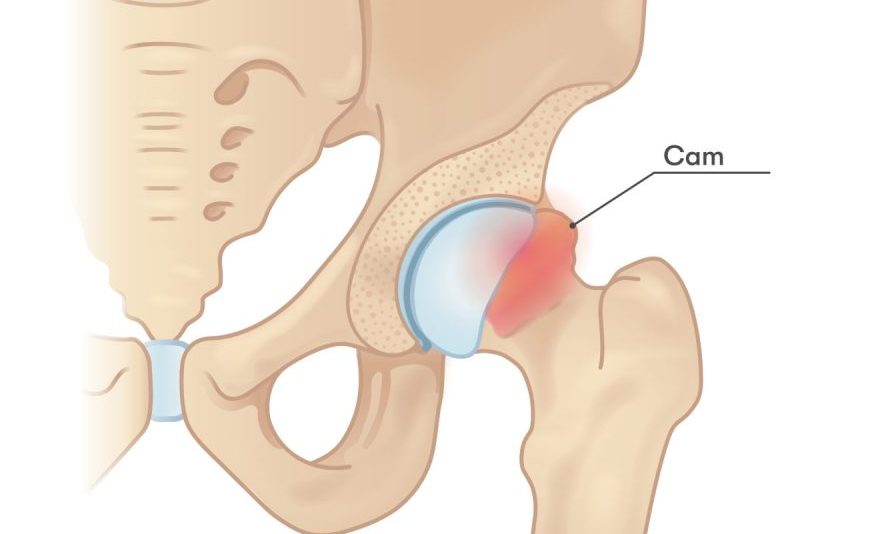Femoroacetabular impingement (FAI) is a condition that involves abnormal contact between the femoral head (ball) and the acetabulum (socket) in the hip joint. This abnormal contact can cause pain, restricted range of motion, and damage to the joint structures over time. FAI is commonly seen in athletes and individuals with certain hip anatomy. There are three types of FAI: cam impingement, pincer impingement, and combined impingement. Cam impingement occurs when there is an abnormality in the shape of the femoral head, while pincer impingement occurs when there is excessive coverage of the femoral head by the acetabulum. Combined impingement involves a combination of both types.
Symptoms of FAI may include hip pain, especially during activities such as sitting, walking, running, or squatting. There may be a limited range of motion in the hip joint, and in some cases, clicking or locking sensations. Treatment for FAI typically involves a combination of physiotherapy, pain management, and in some cases, surgical intervention.
Applying the 5 stages of rehab to FAI can help manage symptoms, improve hip function, and prevent further damage to the joint:
Pain and symptom management. The first stage of rehab focuses on reducing pain and inflammation in the hip joint. This may involve activity modification, hot/cold therapy, and nonsteroidal anti-inflammatory drugs (NSAIDs) to manage pain and reduce inflammation. Physiotherapy treatments such as muscle activation exercises, soft tissue massage, hip joint mobilization techniques can also help to alleviate pain and improve joint mobility.
Range of motion. Once pain and inflammation are under control, the focus shifts to restoring normal range of motion in the hip joint. Physiotherapy exercises and stretches can help to improve flexibility and increase the range of motion. This may include hip flexion, extension, abduction, adduction, and rotation exercises.
Motor control. In stage 3, the focus is on improving neuromuscular control and stability around the hip joint. Exercises that target the muscles around the hip, including the deep stabilizers, hip abductors, hip adductors, and hip external rotators, can help to improve muscle balance, and coordination. Core stability exercises may also be incorporated to provide additional support to the hip joint.
Strengthening. In stage 4, the goal is to build strength in the muscles surrounding the hip joint to improve support and function. This typically involves resistance training exercises such as squats, lunges, bridges, and hip thrusts. Strengthening exercises should be performed with proper form and under the guidance of a physiotherapist to avoid exacerbating symptoms.
Maintenance. In the final stage of rehab, the focus is on maintaining the gains achieved in the previous stages and preventing further hip joint damage. This may involve continuing with a tailored exercise program that includes strengthening exercises, range of motion exercises, and functional activities. It is important to be aware of hip mechanics during daily activities and sports participation to minimize the risk of future impingement.
It is crucial to work closely with a physiotherapist or healthcare professional experienced in hip rehabilitation to ensure that exercises are performed correctly and individualized to the specific needs of the patient. Typically with proper management and rehabilitation, individuals with FAI can experience improved hip function, reduced pain, and a return to their desired level of activity.


